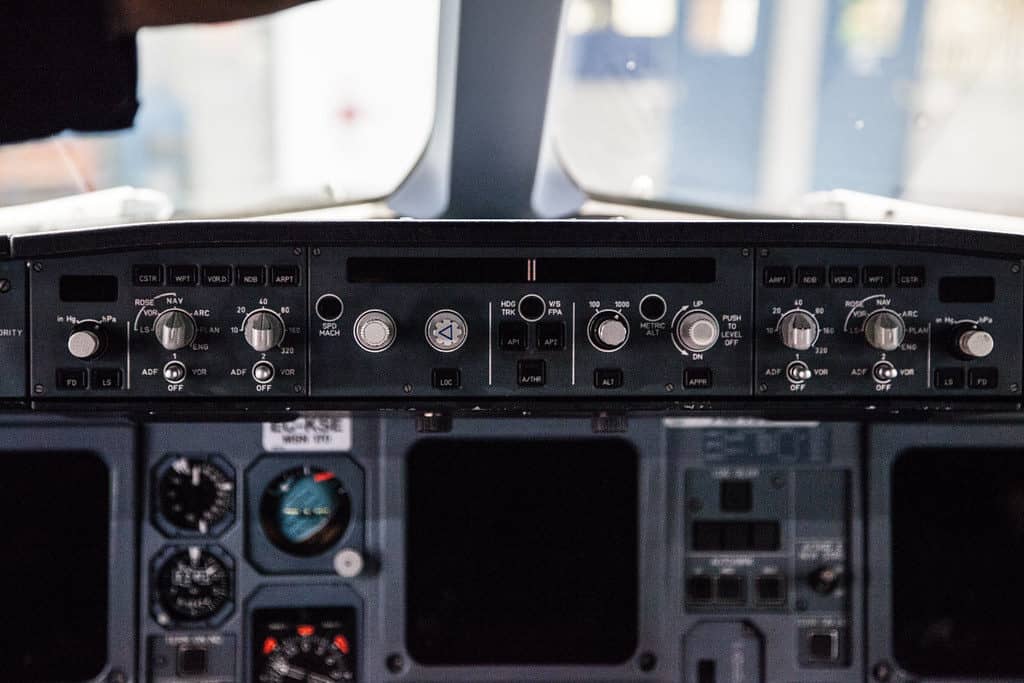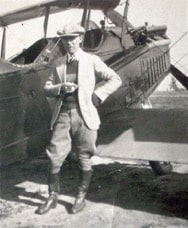
For the non-pilot, aviation language can sound cryptic at first, like a secret code or confusing jargon. Once you start your flight training and become more well-versed in the vocabulary it really isn’t all that confusing after all. However there are still some phrases in the pilot vernacular that seem peculiar, and lots of us will still use it even not really knowing where it came from. One of my favorites is this: why do pilots call the autopilot “George”?
While the origin is not fully known, many believe the autopilot started being called “George” during the WWII era when Royal Air Force pilots referred to their airplanes as “George” after King George VI who technically “owned” the airplane. Others believe the nickname was in reference to George De Beeson who patented the first practical autopilot in the 1930’s.
Personally I have always heard from pilots above me that it was named after King George from WWII. But let’s unpack both theories a little more and you can decide for yourself which one sounds more reasonable.
This article also appeared in video form on our YouTube Channel. New videos come out twice weekly so be sure to subscribe!
Why is the autopilot called “George”?
Before researching this article I had always been told from other pilots around me that the autopilot’s nickname “George” came from WWII and the Royal Air Force. When doing some more digging I found other pilots around the web that also attested to being told the same story, with some even saying they had talked to British pilots from WWII that confirmed the theory. Of course that’s hard to completely vet through the internet.
I was surprised to uncover the second prevailing theory of nicknaming the autopilot “George” after George De Beeson who patented the “Automatic Airplane Control” in 1931. Here’s the full patent application that was approved on November 3rd, 1931. If you want to know mechanically how it worked, read the full application (it’s actually pretty interesting especially considering the historical significance of the invention and what it would later become).

Here are the first few sentences from his patent application. I love that he was trying to explain what an autopilot does and why it would be significant. In today’s day and age even non-pilots understand the concept and importance of an autopilot, but it appears from the patent application that De Beeson was really describing a technological breakthrough.
“This invention relates to airplanes and more especially to a means for automatically flying the machine substantially without manual operation of the several control surfaces. It is an object of the invention to provide a simple, reliable, effective, and highly sensitive apparatus for automatically restoring the airplane to a given and normal longitudinal and traverse balance in the event that it tips or pitches to an undesired angle from the normal.”
Excerpt from George De Beeson’s patent application for “Automatic Airplane Control”
I think calling the autopilot George after De Beeson is a reasonable theory given that it happened before WWII where the other prevailing theory would have originated. Pilots would have had time to learn of De Beeson by that point and refer to the autopilot as “George” instead of simply paying homage to King George. Given that there is a much more solid paper trail on George De Beeson and his influence into the development of the autopilot, this might be a more reasonable theory than the WWII theory.
What do you think?
Other Aviation Sayings and Traditions
Calling the autopilot “George” is just the tip of the iceberg when it comes to curious aviation traditions and sayings. There are many official and unofficial traditions in aviation, but here are just a few of the common ones that you may or may not be familiar with.
Cutting Your Shirt Tail Off After You Solo
This is probably one of the most famous and practiced traditions in all of aviation. It’s a rite of passage and a moment each pilot will never forget. After you solo an airplane for the first time it is tradition to have your instructor cut off your shirt tail. Typically they will sign the shirt tail to memorialize the date, time, airport, and tail number of the airplane you soloed, although people can get pretty decorative about it.
It’s not uncommon to walk into a flight school and see all of the shirt tails hanging on the wall to memorialize the student successes that have happened there. However, it’s a pretty special piece of memorabilia for every pilot and so we’re reluctant to give that piece of history away.
Here’s me on my 16th birthday when I soloed a Cessna 172 for the very first time. You never forget that day!
The Hundred Dollar Hamburger
This is one of those sayings that I will use in regular conversation with non-pilots to explain what I did over the weekend and I often forget that people outside of aviation don’t know what I’m talking about. “The $100 Hamburger” basically means that you flew somewhere for a meal.
It used to approximate the costs of renting or paying for an airplane to fly to a nearby airport, eat a meal, and return. However in today’s world it realistically costs you well over $100. Nonetheless, the saying has stuck and it’s a term used far and wide by pilots.
In fact, a quick google search for the $100 hamburger will show you articles from the New York Times, The Wall Street Journal, Flying Mag, AOPA, and more. It’s a real thing! And it’s always worth it (even if it’s a lot more than $100).
Pancake Breakfast Fly-Ins
I am not really sure where this one originated, but one of the most common reasons for a fly-in is to have a pancake breakfast. Every EAA (Experimental Aircraft Association) meet up I have ever been to or heard about has been around a pancake breakfast.
A simple google search of pancake breakfast fly-ins will return dozens and dozens of fly-in’s across the country that center around the pancake breakfast. It’s a sub-par breakfast if you ask me but pilots have been congregating around pancakes and planes for a long time. So if you get invited to a morning gathering of pilots, come hungry.
Water Salute
You might have seen pictures or a video of an airplane receiving a water salute, where the airplane will taxi through arcs of water sprayed by firefighting vehicles. It originated from naval traditions of boats passing through arcs of water sprayed by firefighting vessels when a boat either entered or left a port for the last time, or a boat or captain was being retired. It is a ceremony that indicates respect, honor, and gratitude of either the vessel itself or those within it.
In aviation it is often used for situations such as an airplane departing or arriving from the first or last revenue generating flight, its first or last flight as a whole, or if the pilot or air traffic control member is retiring and that is their last paid flight. Basically it is a means to memorialize something about that flight, airplane, or personnel onboard. It was even used when President-Elect Donald Trump was departing LaGuardia to meet with then President Barack Obama, as seen below.
Breaking of the Wings
This tradition occurs in the military (where there are many other documented and undocumented traditions) when a pilot completes undergraduate pilot training, or UPT. At graduation pilots will receive their first pair of wings that can be pinned on their uniform.
However, the tradition is for the pilot to break the pair of wings in half and give one half to a spouse, significant other, or family member.
The two halves of the wings are to be kept separated for good luck until the pilot’s death, at which point they are brought back together for good luck for the pilot. The tradition is for the pilot to break and never wear the first set of wings they have been given.
Missing Man Formation
This is one of my favorite, yet most somber, aviation traditions. At the funeral or memorial service for a fallen pilot, military service member, veteran, or political figure, a formation of airplanes is flown above the funeral venue with one of the airplanes clearly missing from formation.
Some traditions will have the airplane split off abruptly from formation once in view of the funeral attendees, while other formations will perform the fly over with an airplane missing from the formation the entire time.
There are variations of the ceremony but all of them are meant to acknowledge and honor the loss of a revered individual. Having an aircraft clearly missing in a formation is symbolic of the person being missed and needed by those in attendance.
Conclusion
These are just some of the many phrases and traditions practiced in aviation today. When you become a pilot you are joining a unique band of individuals that are all pursuing the same adventure in unison. It’s a fantastic community of learners, thrill-seekers, and creators alike.
When you meet another pilot you’ll instantly have something to connect about, be it the types of airplane you fly, what you call your autopilot, or what city you last experienced the $100 hamburger. It’s an exclusive bunch unlike no other.
Blue skies!


